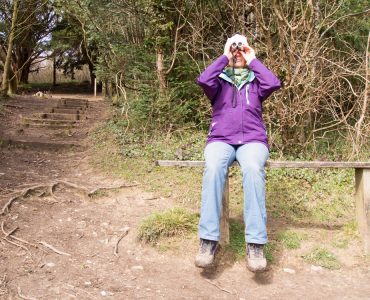The bird is also known as Blacksmith lapwing and its scientific name being Vanellus armatus. Lapwing belongs to the family of charadriidae and that’s the same family to which the dotterels and plovers belong too. This is often referred to as a larger plover since it is quite similar to them.
There has been a huge debate of the exact numbers of this species, but around 25 of them are known till now as per the classification. The evolution story of this bird is also not known well and it is understood that the history of plovers and lapwings is quite similar to each other.
The bird is approximately 31 cms in length and can be up to 76 cms in wingspan while flying or while they open up their wings fully. The weight of the bird can reach a maximum of 300 grams. Statistics report that these birds do breed in huge flocks and that can be as big as 1, 00,000 birds in it.
It is one of the largest waders and could be of a size similar to that of a pigeon. That’s the same reason for which it may be called as green plover or peewit. The bird may appear a little black from a distance. But the actual colours can be observed from a little near. It had excellent dark green and purple colours on the top of its body, with the cheeks and the breast portion of it being white in colour. The under tail portion of it may appear to be orange-brown in colour with the legs being pink in colour, making it quite a beauty. The throat of this bird changes its colour with season and can be black during summers and white during winter. The feathers also become a little scaly during winters time. The bird does not have a difference in looks, when it comes to male and females. They both have the same appearance with male having a whiter face and blacker breast. Also the crest in case of male is a little longer than the female.
The younger ones of this bird are a little different in their appearance. They tend to have a scalier looking back and a shorter crest which can differentiate from its parents. The bird has a slower flying speed and the wing beat is quite slow for their size. While flying it gives a feeling that the speed won’t be able to keep them up in the air. But the bird has excellent acrobatic capabilities and has a huge variety of dives and flights which is a beauty to watch.
The bird makes a sound of ‘pee-wit’ which is why is the name peewit comes from. The song of this bird comes on as it gets busy in its acrobatics. The bird makes a shallow nest and would prefer open areas like farmland and marshlands. They lay eggs which are oval in shape and look non-glossy and stone coloured, with some black blotches on top of it. Male and female, both of them incubate the eggs and feeding the young ones is also pursued as a joint activity.
Lapwing:
Let us know if you liked the post. That’s the only way we can improve.








